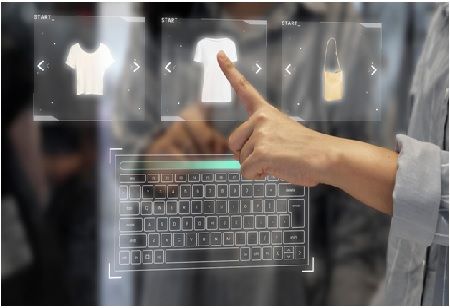
Brands today are locked in an invisible battle. One fought not with traditional weapons but with algorithms, deep learning, and impersonation. As artificial intelligence (AI) revolutionises how companies protect their online presence, counterfeiters and cyber criminals use the same technology to outmanoeuvre these defences.
The Evolution of Online Counterfeiting
Counterfeiting has existed for centuries, but the internet has transformed it into a hyper-scalable, anonymous and highly sophisticated industry. What was once confined to physical markets has now exploded across e-commerce platforms, social media, and even the dark web. Fraudulent sellers no longer rely on poor-quality replicas; AI-powered design tools allow them to create indistinguishable fakes with realistic packaging, holograms and even fake reviews generated by bots.
Luxury brands, pharmaceuticals, and consumer electronics companies are among the hardest hit. The 2023 OECD report estimated that counterfeit and pirated goods make up 3.3% of global trade, costing legitimate businesses billions annually. However, the economic loss is only one part of the problem; fake medicines, electrical components, and safety-critical automotive parts pose life-threatening risks.
The Rise of Deepfake Commerce
Perhaps the most alarming development in digital counterfeiting is the use of deepfake technology. AI-generated influencers, whose voices and faces are entirely synthetic, have begun promoting fraudulent products on platforms like Instagram, TikTok, and YouTube. These artificially created personas can amass thousands of followers, lending credibility to illicit businesses that exploit consumers' trust.
Meanwhile, voice-cloning AI has enabled scammers to impersonate brand executives or customer service agents, tricking consumers into purchasing fake products through phishing campaigns. As deepfake technology improves, distinguishing real endorsements from fraudulent ones will become increasingly difficult.
Dark Web Markets & the ‘Shadow Economy’
Beyond mainstream e-commerce, counterfeit goods and fake brand identities thrive on the dark web, where anonymity makes enforcement nearly impossible. Sophisticated AI-driven platforms on the dark web automate counterfeit production, with cybercriminals offering ‘fraud-as-a-service’; a business model where AI tools create counterfeit product designs, generate fraudulent reviews, and even mimic shipping patterns to fool consumers.
Some of these marketplaces go a step further, using AI to predict which brands are most vulnerable to counterfeiting based on real-time social media trends and product demand analytics. This level of intelligence makes it difficult for brands to stay ahead of the counterfeiters, as fraudulent networks adapt faster than traditional enforcement methods can respond.
As an initiative towards their brand protection strategy, companies are deploying anti-counterfeiting solutions capable of scanning millions of listings, social media posts, and marketplace transactions in real-time. These systems use computer vision, natural language processing (NLP), and machine learning to detect anomalies and patterns associated with counterfeit goods.
Proactiveness Wins the Battle in the Changing Landscape.
The AI-equipped counterfeiters are now answered by the new wave of AI-driven brand protection solution providers in 2025. Acviss’s AI-powered platform is part of a broader movement toward proactive brand protection where technology doesn’t just react to counterfeiting but predicts and prevents it before it happens.
With the self-learning capability, Truviss by Acviss is stepping up in the fight against counterfeiters. The online brand protection solution leverages AI to scan, detect, and eliminate fake listings across 100+ e-commerce platforms, social media, domain and mobile application stores, ensuring brands stay ahead of fraudsters. The combination of machine learning, image recognition, and automated enforcement helps companies protect their digital presence and maintain consumer trust.
Legal & Ethical Dilemmas: Who Owns Brand Authenticity?
As AI-generated content becomes indistinguishable from reality, a new legal and ethical debate emerges: who is responsible for protecting brand authenticity in the age of generative AI? If AI can generate perfect replicas, what defines an 'authentic' brand presence?
Regulators worldwide are scrambling to catch up, introducing laws that force online platforms to take more responsibility for counterfeit sales. The European Union’s Digital Services Act and the US INFORM Consumers Act aim to hold e-commerce platforms accountable for fake listings. However, these regulations often struggle to keep pace with technological advancements.
Above all, AI itself presents an ethical paradox: while it offers brands powerful tools to protect their identity, the same technology enables the creation of indistinguishable fakes. The question remains. Can authenticity be algorithmically defined and enforced, or will AI ultimately erode the very concept of brand legitimacy?
The Future of Online Brand Protection
With the advancement in technology, counterfeiters are on the rise as well. They are deploying their own AI-driven tools to generate ultra-realistic counterfeit product listings that evade detection. Adversarial AI, for instance, manipulates images or text in subtle ways that trick brand protection algorithms into misclassifying fake products as legitimate. Some fraudsters even use generative AI to create fake social media influencers who promote counterfeit goods through seemingly genuine testimonials.
To counter, the next frontier of brand protection may involve decentralised verification models. Technologies such as zero-knowledge proofs, which allow verification without revealing underlying data, could help authenticate genuine products without exposing sensitive information. Meanwhile, quantum encryption may provide next-generation security solutions for brand protection in the digital age.
However, the future also poses risks. What happens when AI reaches a point where even experts cannot distinguish real from fake? If AI-generated content, voices, and identities become the norm, will consumers learn to trust different verification methods, such as blockchain-backed digital certificates, or will authenticity itself become obsolete?
The Silent War Rages On
The battle for brand protection is no longer a matter of shutting down street vendors selling knock-offs; it has become a high-stakes digital race where AI is both the sword and the shield. As brands, consumers, and regulators navigate this ever-shifting landscape, one thing is clear: in the AI era, trust itself is the most valuable currency of all. The silent war continues, and in this fight, only the most innovative will survive.
We use cookies to ensure you get the best experience on our website. Read more...